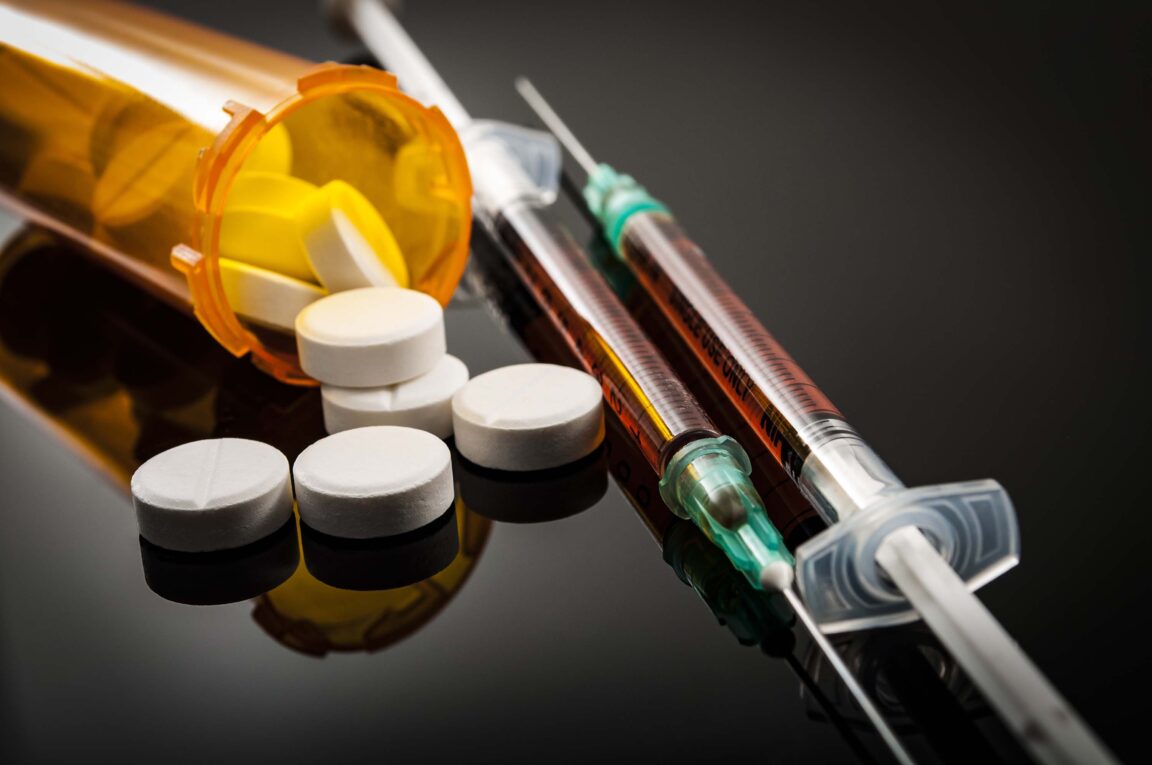Opioids are a class of drugs that include prescription pain relievers like oxycodone, hydrocodone, codeine, morphine; synthetic opioids like fentanyl; and illegal drugs like heroin. Opioids bind to specific receptors in the brain and central nervous system that reduces the perception of pain. They also induce feelings of euphoria and relaxation. While opioids are highly effective pain relievers, over time they can also lead to dependence and addiction.
What Causes Opioid Use Disorder?
Opioid Use Disorder develops through complex interactions between social, environmental, and genetic factors. At a basic level, regular opioid use causes changes in the brain’s reward system and stress response. The brain adapts to large amounts of opioids by producing less of its own natural opioids and more opioid receptors. This drives patients to constantly seek out more of the drug to relieve withdrawal symptoms and experience rewarding effects. However, the development of opioid use disorder is not simply a matter of biological mechanisms – it arises through an intricate interplay between biological vulnerabilities and circumstantial risks.
Genetics can increase one’s susceptibility to addiction. Family history of substance use issues is a strong predictor, though having addicted relatives does not doom anyone to the same fate. Personal trauma or painful medical conditions that require long-term opioid treatment also raise risk. Factors like poverty, lack of social support, area drug availability, and mental health issues further complicate the picture. Opioid use disorder is driven by a combination of biological predispositions alongside environmental stressors – there is rarely a single cause.
Diagnosing Opioid Use Disorder
The Diagnostic and Statistical Manual of Mental Disorders, 5th Edition (DSM-5) provides guidelines for diagnosing opioid use disorder. A diagnosis requires evidence of impaired control, social impairment, risky use, and pharmacological criteria within a 12-month period. Two or more criteria like craving, withdrawal symptoms, larger amounts needed over time, or continued use despite impacts must be present. Severity is determined by the total number of criteria met – mild (2-3), moderate (4-5), or severe (6 or more).
Proper diagnosis relies on a complete assessment including medical, psychiatric, and substance use history. Urine drug testing can help verify self-reported Opioid Use Disorder. However, the diagnostic process should avoid assumptions and consider each case individually. Self-diagnosis of opioid use disorder or addiction is not recommended due to complexities and similarity to side effects in some pain patients. A comprehensive evaluation by a medical provider is needed.
Public Health Impact of the Opioid Epidemic
The United States is experiencing an ongoing opioid overdose epidemic that is devastating communities nationwide. Opioid-related overdose deaths have quadrupled since 1999 and increased 30% from 2017 to 2018 alone. In 2018, 67,000 Americans died of drug overdoses with opioids involved in around 47,000 deaths. This far surpasses deaths from car accidents or gun violence.
While prescription opioids initially drove the crisis, heroin and synthetic opioids like fentanyl are increasingly involved in overdoses. Fentanyl is up to 100 times more potent than morphine and contributes greatly to rising mortality rates. The crisis cuts across age, gender, and socioeconomic status. It also places immense strain on healthcare, criminal justice, child welfare, and social services that are ill-equipped to handle such profound need. The societal costs of opioid misuse have been estimated in the hundreds of billions. Clearly, opioid use disorder has evolved into a severe public health emergency on par with major diseases.
Treatment for Opioid Use Disorder
No single treatment is appropriate for everyone with opioid use disorder. An individualized treatment plan is required based on severity, medical needs, and personal preferences. The complete recovery process often spans detoxification, medication-assisted treatment, counseling, and long-term support. The goal is long-term remission and improved functioning.
- Medication-assisted treatment (MAT) with methadone, buprenorphine, or naltrexone is the gold standard recommended by all major health authorities. Medications reduce cravings and withdrawal while helping patients re-establish lives and cope without illicit drugs.
- Outpatient treatment programs offering individual and group counseling teach coping strategies, life skills, and help address any co-occurring conditions. Peer support enhances outcomes.
- Residential or inpatient programs provide structured 24/7 support and activities during intensive early recovery or for those needing medical detoxification services.
- Mutual-help groups like Narcotics Anonymous encourage community, accountability and long-term abstinence. Long-term engagement seems vital for ongoing recovery management given high risk of relapse.
Recovery from opioid use disorder is a long process requiring multi-faceted care. Medication and behavioral therapies work best together. MAT should not be time-limited and support continued to prevent relapses that can end in overdose. Though challenging, recovery is achievable for the majority of patients.
Complex interactions between brain changes, genetics, environment, and public policy that underlie the opioid overdose epidemic. While opioids are highly effective pain medications, regular long-term use carries considerable risk of dependency and addiction due to alterations in the brain’s reward system. Proper diagnosis, MAT, counseling and long-term support are all vital components of successful treatment. With comprehensive, multi-faceted care tailored to each individual’s needs, recovery is attainable for most people impacted by this disease.
*Note:
1. Source: Coherent Market Insights, Public sources, Desk research
2. We have leveraged AI tools to mine information and compile it

